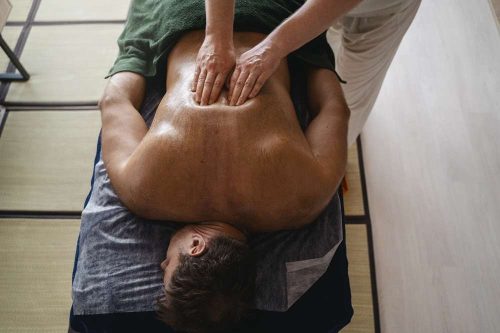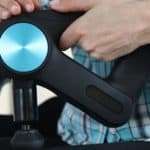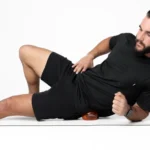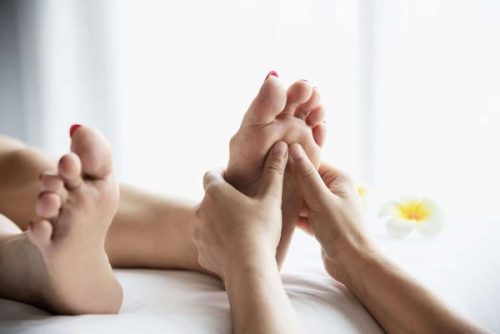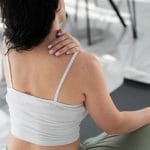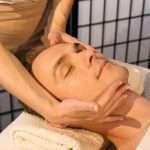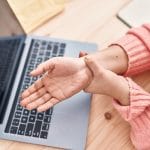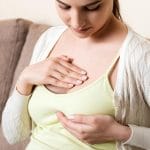How to massage back muscles effectively is one of the most valuable self-care skills you can learn. Whether you’re dealing with soreness, tension, or just need to relax, a proper back massage can work wonders. Back pain and stress are common complaints, and few things beat the relief of a great back massage. Whether you’re easing your own tension or helping a partner unwind, learning how to massage the back effectively can promote relaxation, improve circulation, and reduce chronic muscle tightness.
In this guide, you’ll learn step-by-step techniques, tips for self-massage and partner massage, and how to make the most of your massage with tools and aftercare.Back pain and stress are common complaints, and few things beat the relief of a great back massage. Whether you’re easing your own tension or helping a partner unwind, learning how to massage the back effectively can promote relaxation, improve circulation, and reduce chronic muscle tightness.
In this guide, you’ll learn step-by-step techniques, tips for self-massage and partner massage, and how to make the most of your massage with tools and aftercare.
Table of Contents

Can You Massage Your Own Back? 🤔
Yes—while it’s not always easy to reach every area, there are several self-massage techniques that can offer relief:
- Tennis ball method: Place a tennis or massage ball between your back and the wall. Lean in and roll gently over sore areas.
- Massage cane: A curved tool with knobs lets you target hard-to-reach spots like the upper back or shoulder blades.
- Massage gun: These percussive devices can help release knots when applied to the lower or middle back using an extended grip.
- Foam roller: Lie on a roller and slowly move back and forth to release tension along the spine.
- Wall press: Use your fists to lean back against a wall and apply gentle pressure.
- Back massager pad: Electric or vibrating pads can be placed on a chair for passive massage.
For best results, warm up with some gentle stretching before self-massaging. Combine these methods for different parts of the back depending on your flexibility.
Partner Massage vs Self-Massage
| Feature | Self-Massage | Partner Massage |
|---|---|---|
| Convenience | Can be done anytime | Requires another person |
| Target Area Reach | Limited (especially upper back) | Full access to entire back |
| Pressure Control | Fully in your control | Depends on partner’s skill |
| Relaxation Level | Moderate | High (more passive, soothing) |
Both have benefits—ideally, mix both into your wellness routine. Partner massage can also increase emotional connection.
How to Massage Back: Step-by-Step Guide
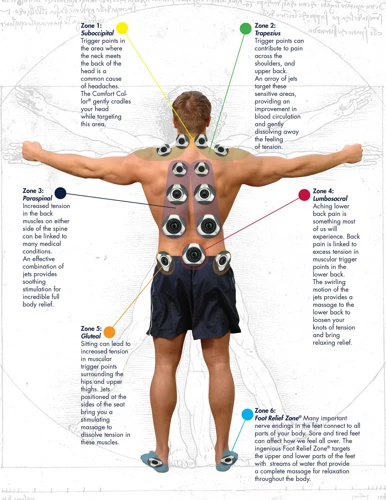
Learning how to massage back muscles effectively is key to long-term relief and relaxation. Whether you’re trying to soothe soreness or exploring how to give a good back massage as part of a couple’s routine, this section outlines everything you need.
1. Set the Scene
🌙 Choose a quiet space with soft lighting
- Use a firm surface (floor mat or massage table)
🎵 Play calming music
🧴 Use massage oil to reduce friction (grapeseed or almond oil with lavender is ideal)
🔥 Make sure the room is comfortably warm
2. Warm Up the Muscles
👐 Use gentle, broad strokes (effleurage) from the lower back up to the shoulders
⏱️ Do this for 2–3 minutes to increase circulation
⚖️ Start with light pressure to avoid shock to tense muscles
3. Apply Targeted Techniques
Effleurage (gliding strokes)
- Long, sweeping motions with the palms
- Use to start and end the massage
- Helps spread the oil and promote relaxation
Petrissage (kneading)
- Use thumbs and fingers to gently knead muscle tissue
- Best for the shoulders and lower back
- Roll and squeeze muscles to release lactic acid
Friction (deep circular pressure)
- Use fingertips or knuckles to dig into stubborn knots
- Move in small, firm circles
- Excellent for chronic tension and trigger points
Compression
- Place both palms flat and gently press into muscles, hold, then release
- Improves blood flow and warms up the area
Tapotement (rhythmic tapping)
- Use the edge of your hands to gently tap the muscles
- Energizes and stimulates the area after a slower massage
4. Focus on Targeted Areas
| Area | Best Technique | Tip |
| Upper Back | Effleurage, Friction | Avoid the spine, focus on traps/rhomboids |
| Middle Back | Petrissage | Use firm pressure with both hands |
| Lower Back | Compression | Use knuckles in circular motions |
| Shoulders | Friction | Great area to release neck tension |
| Neck | Light Effleurage | Be extra gentle, avoid overpressure |
Spend 2–3 minutes on each area for a balanced massage.
🛠️ Massage Tools to Enhance the Experience
If you’re new to learning how to massage back muscles on your own, using tools can make the process much easier and more effective. The same applies if you’re figuring out how to give a good back massage and need extra help with deeper knots.
If you don’t have a massage partner, try:
- Massage Gun: Ideal for deep muscle stimulation and localized relief
- Foam Roller: Great for spinal alignment and mid-back tension
- Massage Chair Pad: Convenient option for daily use while seated
- Hot Compress: Prepares the muscles and enhances relaxation
- Theracane or Back Buddy: Target specific trigger points with control
- Electric heating pad with vibration: Doubles the benefit of warmth and massage
These tools can significantly enhance the effects of self-massage when used properly.
Want to know exactly how to use a massage gun on your lower back? 👉 Read our step-by-step guide for safe, effective techniques and expert tips.
Aftercare Tips 💧
- Hydrate: Flush toxins by drinking plenty of water
- Rest: Allow the body to fully relax post-massage
- Apply Heat: Use a warm towel or heating pad on the area to soothe muscles
- Stretch: Gentle stretches can prolong the effects of the massage
- Use Epsom salts: A warm bath with Epsom salts helps detox and ease soreness
Common Mistakes to Avoid
One of the biggest issues when learning how to massage back effectively is applying too much pressure too soon or skipping important warm-up strokes. If you’re learning how to give a good back massage, it’s also important to communicate with your partner to avoid discomfort.
- Applying too much pressure too soon
- Skipping the warm-up strokes
- Massaging directly over the spine or bones
- Using poor posture if doing a self-massage
- Not using oil or lotion (can cause friction and discomfort)
- Ignoring communication—ask your partner if pressure is okay
- Rushing through the massage without rhythm or flow
Benefits of Regular Back Massage 🌟
✅ Reduces stress and cortisol levels
✅ Improves blood circulation
✅ Eases muscle soreness and stiffness
✅ Boosts immunity
✅ Enhances sleep quality
✅ Promotes better posture
✅ Improves flexibility and range of motion
✅ May reduce frequency of headaches or migraines
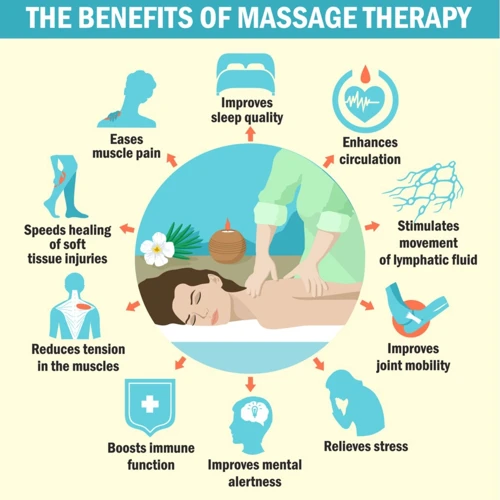
When Not to Massage Your Back
While massage is generally safe and beneficial, there are situations when it’s best to avoid massaging your back:
- Recent injuries: Avoid massage if you’ve recently had a back strain, sprain, or trauma. Wait until the area is healed or cleared by a healthcare professional.
- Inflammation or infection: If you have visible swelling, bruising, or an infection, skip massage to prevent worsening the condition.
- Skin conditions: Avoid massaging over rashes, wounds, sunburn, or irritated skin.
- Herniated disc or sciatica: Massage may offer relief in some cases, but always consult with your doctor to determine safe techniques.
- Fever or illness: Postpone massage if you’re sick or feverish, as massage can temporarily intensify symptoms.
Back Massage for Specific Conditions
Massage can be adapted for different types of discomfort and back conditions:
For muscle knots: Use friction and compression techniques to release stubborn trigger points. Massage guns and lacrosse balls are especially useful here.
For general tension: Effleurage and petrissage help to melt stress-related tightness. Focus on broad, soothing strokes and even pressure.
For posture correction: Target the upper back, shoulders, and neck with kneading and tapotement to release tight muscles that pull the body out of alignment. Regular massage can help rebalance your posture over time.
For lower back pain: Apply light to moderate pressure with compression and circular kneading. Avoid the spine itself and focus on muscles on either side. Always warm up the area first.
Massage isn’t a cure-all, but it can be a powerful support tool when tailored to your body’s needs.
❓Frequently Asked Questions
Q: Can massage help with sciatica?
A: Massage may help ease the discomfort of sciatica by relaxing tight muscles around the lower back and hips that put pressure on the sciatic nerve. However, avoid deep pressure directly over the nerve, and always consult your healthcare provider first.
Q: What should I wear for a back massage?
A: Wear loose, comfortable clothing, or undress to your comfort level. Many people prefer to remove their shirt or lie under a towel so the back can be massaged directly with oil. If you’re getting a professional massage, a therapist will drape you for modesty.
Q: What kind of massage is best for back pain relief?
A: Deep tissue massage is excellent for chronic pain. For stress-related tension, Swedish massage is often more soothing.
Q: How often should I massage my back?
A: Once or twice a week is ideal. For chronic tension, more frequent sessions may help.
Q: Is it safe to massage your own back?
A: Yes, with proper tools and awareness of pressure. Avoid overdoing it and stay away from injured areas.
Q: Can I massage my back if I have a herniated disc?
A: Consult a healthcare provider first. In some cases, gentle massage around—not on—the area may help, but caution is key.
Q: What oil is best for back massage?
A: Use a carrier oil like almond, grapeseed, or jojoba. Add a few drops of essential oils like lavender or eucalyptus for aroma and therapeutic effect.
Q: Should I shower after a massage?
A: Yes, but wait 30–60 minutes so your body fully absorbs the oil and the benefits of the massage.
Q: Can massage help with posture?
A: Yes. By releasing tight muscles in the shoulders, spine, and lower back, massage can realign posture over time.
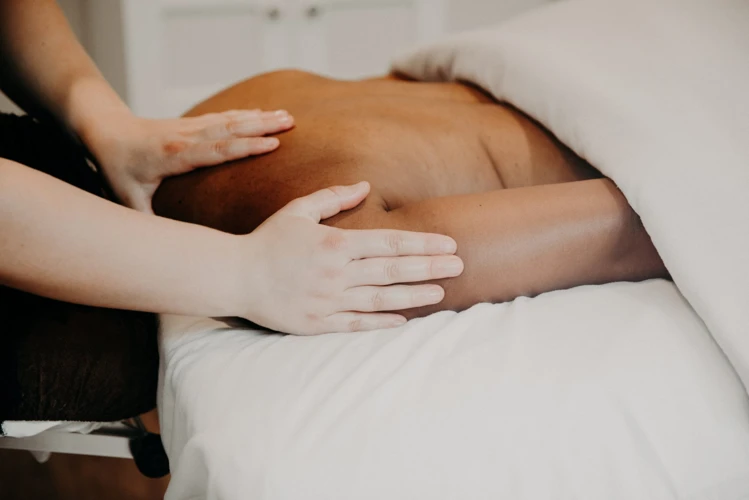
Final Thoughts 🧘
Whether you’re just beginning to learn how to massage back muscles or you’re experienced in how to give a good back massage, consistent practice will improve your skills and the benefits you receive.
Learning how to massage back muscles—either on yourself or a loved one—is a valuable skill that supports physical and emotional well-being. Whether you’re relieving knots after a long day or adding massage to your self-care routine, taking the time to slow down and release tension can make a huge difference.
For maximum impact:
- Be consistent with your massage routine
- Combine massage with movement and hydration
- Use the right tools to enhance your efforts
Looking for tools to make back massage even easier? 👉 Check out our roundup of the Best Back Massagers and complement your routine with the right how to warm massage oil at home for better glide and skin nourishment.
📚References
- Cleveland Clinic – Massage Therapy
- Healthline – Benefits of Back Massage
- National Institutes of Health – Massage Therapy Research
- Massage Mag – How Self-Massage Can Reduce Stress
⚠️ Disclaimer:
This article is for informational purposes only and does not constitute medical advice. Always consult with a licensed healthcare provider or certified massage therapist before beginning any new treatment, especially if you have pre-existing health conditions or concerns.

